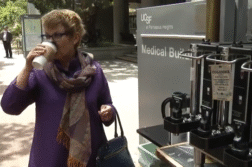CLEVELAND, Ohio. (Ivanhoe Newswire) — The leading cause of cardiac chest pain is coronary artery disease, which affects over 18 million adults in the U.S. But do you know what the second leading cause is? Recently a doctor from the Cleveland Clinic chaired an international committee on the diagnosis and treatment of this disease and to raise awareness of its existence.
Forty thousand people each year will suffer from this rarely diagnosed disease, but many people don’t know it exists!
“We know that roughly five percent of non-ischemic chest pain is pericarditis,” said Allan Klein, MD, director of the Pericardial Center at Cleveland Clinic.
But…
“It’s only point one percent of admissions to the hospital with pericarditis,” he explained.
Pericarditis is the inflammation of the sac that surrounds the heart, which causes sharp chest pain and in some cases difficulty breathing. But sometimes it keeps coming back.
“So, the biggest cause of what we call recurrent pericarditis is undertreatment of the acute episode,” Dr. Klein said.
There were no guidelines to treat pericarditis in the U.S. — until now. Dr. Klein worked with 22 experts all over the world to publish a consensus.
“This allows us in one place to have recommendations from all these experts, how you diagnose it and how you treat this,” he told Ivanhoe.
The statement details how to utilize different types of imaging in diagnosis, and what to look for if there is improvement.
“There is hope. With the proper diagnostic testing, with the proper therapeutics. People will get better.”
If you are being treated for pericarditis, discuss with your doctor if you need to stop exercising. Dr. Klein says people with pericarditis need to keep their heart rate below 100 BPM. However, there are some treatments such as IL-1 blockers that can allow exercise after a month.
Contributors to this news report include: Marcy Wilder, Assistant Producer; Roque Correa, Editor.
To receive a free weekly e-mail on medical breakthroughs from Ivanhoe, sign up at: http://www.ivanhoe.com/ftk
Source:
https://my.clevelandclinic.org/health/diseases/16898-coronary-artery-disease
FOR MORE INFORMATION, PLEASE CONTACT:
| Allan Klein, MD
Director of the Pericardial Center at Cleveland Clinic (216) 444-3932 |
Kathryn Ely
Corporate Communications at Cleveland Clinic |
If this story or any other Ivanhoe story has impacted your life or prompted you or someone you know to seek or change treatments, please let us know by contacting Marjorie Bekaert Thomas at mthomas@ivanhoe.com



